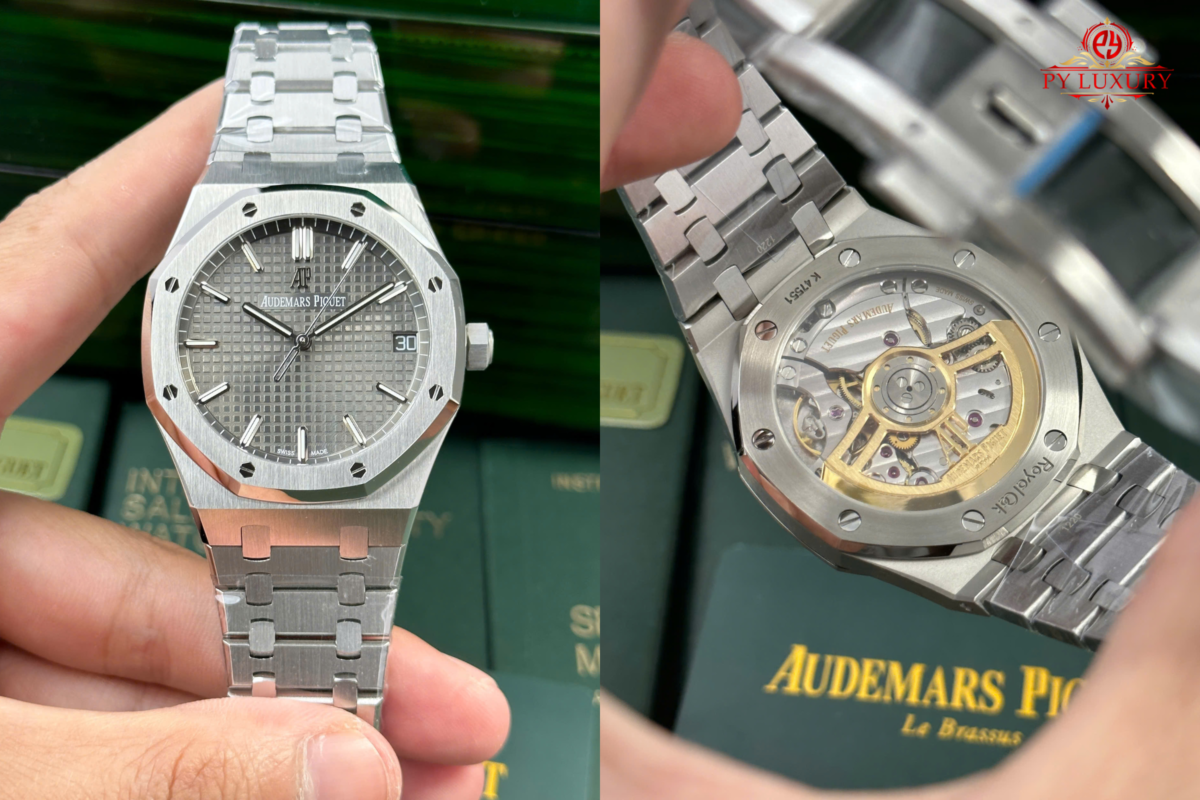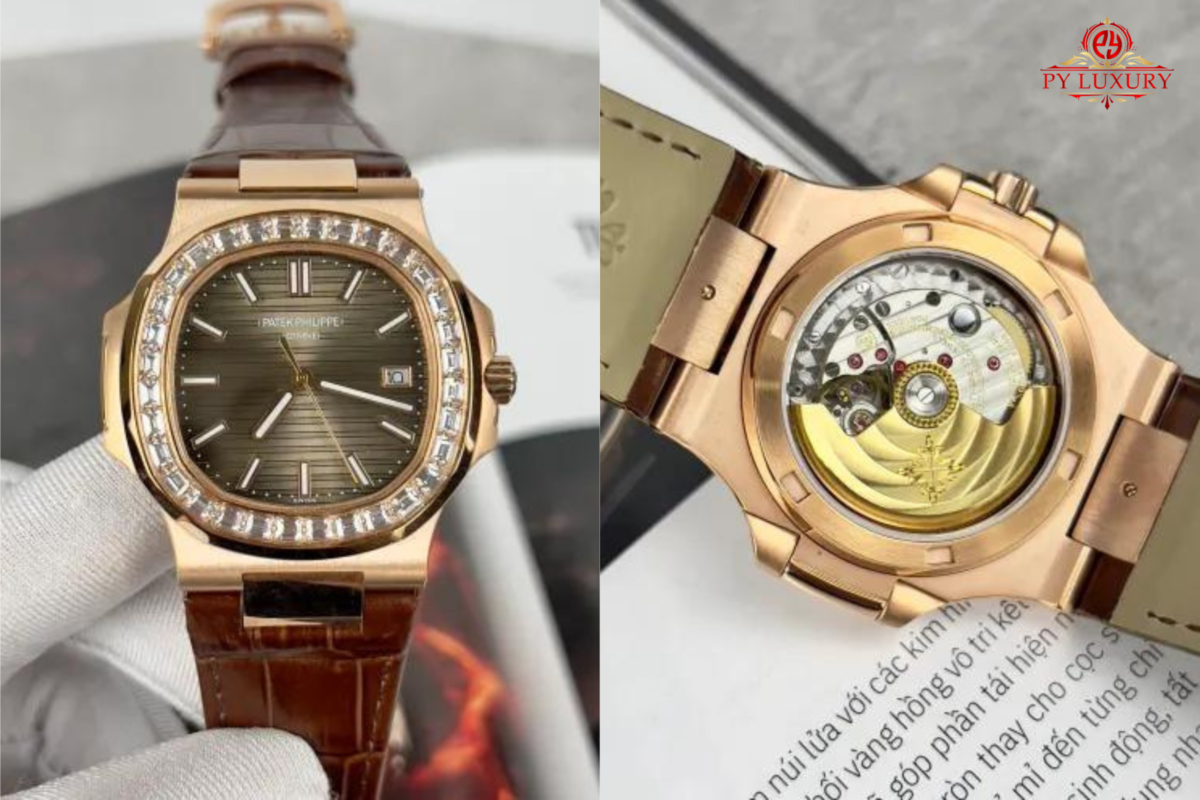Blog about Watches, Jewelry & Bags, Watch Blog
Comparing Replica Watches: Swiss vs. Japanese Movements
In the world of replica watches, two types of movements dominate the market: Swiss and Japanese. These two movements have long been a topic of discussion for watch enthusiasts and buyers alike. The most frequently asked questions in this space are, “What are the differences between Swiss and Japanese replica watches?” and “Are Japanese watches the same as Swiss ones, apart from the machinery?” This article aims to address these questions by comparing the two types of movements, offering insights into their quality, accuracy, craftsmanship, and value for money.
At Py-Luxury, we offer both Swiss and Japanese movement-equipped watches, with our primary focus now on Swiss watches due to their superior craftsmanship and resemblance to the originals. However, each type of movement has its own strengths and weaknesses that cater to different buyer preferences.
1. Understanding Watch Movements
Before diving into the comparison, it’s essential to understand what watch movements are and why they matter. A watch movement, also known as the “caliber,” is the mechanism that drives a watch’s functions. It controls everything from the ticking of the second hand to more complex features like the chronograph and date functions. Watch movements can be categorized into two main types: Quartz and Automatic (also known as mechanical movements).
a. Quartz Movements
Quartz movements are powered by a battery and are known for their accuracy. They require less maintenance compared to automatic movements and are more affordable. However, they lack the craftsmanship and complexity that watch enthusiasts often seek. Japanese movements are typically quartz in nature, especially in lower-cost replica watches.
b. Automatic Movements
Automatic or mechanical movements are powered by the motion of the wearer’s wrist, making them more complex and, oftentimes, more desirable. These movements are preferred in high-end replicas as they closely mimic the functionality of genuine luxury watches. Swiss replicas, in particular, focus on automatic movements, which provide a more authentic watch experience.
2. Swiss Movements in Replica Watches

Swiss watches are the epitome of luxury and precision in the watchmaking world, and this same ethos is applied to Swiss replica watches. The introduction of Swiss movements into the replica market began in the early 2010s, with brands like Panerai being the first to offer Swiss movements in their replicas. Since then, almost all high-end replica brands, including Rolex, Patek Philippe, and Audemars Piguet, have adopted Swiss movements.
a. Craftsmanship and Quality
Swiss replica watches are known for their outstanding craftsmanship and attention to detail. The production process involves dissecting an original luxury watch and replicating every component, from the movement down to the smallest design details. This meticulous process ensures that Swiss replicas come as close to the originals as possible.
Swiss movement replicas are produced in much smaller batches compared to Japanese replicas, which allows for stricter quality control. Every part of the watch, from the case to the dial, is crafted to match the original’s dimensions and appearance. The result is a replica watch that is almost indistinguishable from the genuine article.
b. Accuracy and Durability
One of the standout features of Swiss replicas is their superior accuracy. Swiss movement watches often use ETA or Valjoux 7750 movements, which are renowned for their precision. These movements provide a smooth sweeping second hand that ticks at 3-4 beats per second, just one beat less than genuine luxury watches, which tick at exactly 5 beats per second. This subtle difference is hardly noticeable to the untrained eye, making Swiss replicas highly sought after for their smooth, authentic look.
Chronograph models equipped with Swiss movements also function exactly like their genuine counterparts. For example, Swiss Valjoux 7750 movements enable full chronograph functionality, allowing all sub-dials to work in conjunction with the stopwatch feature, just as they would in an original watch. Swiss replicas with power reserve indicators also work exactly like the genuine models, with the indicator showing how much power is stored in the movement as the watch is wound.
c. Materials and Build
Swiss replicas take pride in using high-quality materials that are identical to those used in authentic luxury watches. At Py-Luxury, we’ve introduced 904L steel in several of our Swiss Rolex replicas. This is the same type of steel used in genuine Rolex watches, known for its exceptional durability and resistance to corrosion.
In addition to high-grade steel, Swiss replicas feature ceramic, Titanium, or CeraChrome bezels, depending on the original watch’s design. The crystals used in these watches are made from genuine sapphire, coated on both sides to provide exceptional clarity and scratch resistance. This attention to detail ensures that Swiss replicas offer a nearly identical look and feel to the originals, right down to the reflection of light off the dial.
d. Price Point
The superior quality of Swiss replicas comes at a higher price compared to their Japanese counterparts. However, this higher cost is justified by the exceptional craftsmanship, precise movements, and high-quality materials used in the production of Swiss replicas. Buyers who are looking for a timepiece that closely mirrors the original in every way will find that Swiss replicas offer the best value for their investment.
3. Japanese Movements in Replica Watches

Japanese replica watches offer a more budget-friendly alternative to Swiss replicas while still providing reliable performance. Japanese movements, primarily made by Miyota and OS020, are widely used in the replica watch industry due to their affordability and decent accuracy.
a. Quality vs. Affordability
Japanese movements, while reliable, do not achieve the same level of refinement as Swiss movements. One of the most significant differences between Japanese and Swiss replicas is the casing dimensions. Japanese movements are often slightly thicker or thinner than their Swiss counterparts, resulting in minor discrepancies in the watch’s case size and overall appearance. These differences can also affect the fit of the watch’s strap, leading to a less precise fit compared to the original or Swiss replicas.
Despite these cosmetic differences, Japanese replicas still offer a reasonable level of quality for their price. At Py-Luxury, Japanese replicas are typically made with high-grade steel and ceramic bezels, although the fonts and markings may not be as sharp as those found on Swiss replicas. Additionally, Japanese replicas often lack serial numbers and other fine details that are present in Swiss replicas, making them less visually accurate when compared to the original.
b. Accuracy and Durability
While Japanese movements are known for their reliability, they lack the precision and functionality of Swiss movements. For example, Japanese automatic movements used in chronograph watches do not offer a functional stopwatch feature. Instead, the sub-dials on these watches may be used for day/date functions rather than accurate timekeeping features found in Swiss movements.
However, for buyers who prioritize affordability over complete accuracy, Japanese replicas are a solid choice. These watches offer dependable performance for everyday use, even if they do not perfectly replicate the functionality of a genuine luxury watch.
c. Materials and Build
Although Japanese replicas use decent materials, such as high-grade steel and ceramic bezels, they fall short when it comes to the finer details. The clarity of the sapphire crystal, the sharpness of the fonts, and the overall build quality are not as refined as those found in Swiss replicas. However, for the price, Japanese replicas still offer a respectable level of craftsmanship.
d. Price Point
Japanese replicas are significantly more affordable than Swiss replicas, making them an attractive option for buyers who are new to the world of replica watches. At Py-Luxury, many customers start with a Japanese replica to test the waters before upgrading to a Swiss model. Japanese replicas offer a solid entry point for those looking to experience the look and feel of a luxury watch without committing to the higher price of a Swiss replica.
4. Key Differences Between Swiss and Japanese Movements in Replica Watches
To better understand the distinctions between Swiss and Japanese movements in replica watches, here’s a breakdown of the key differences:
| Feature | Japanese Replica Watches | Swiss Replica Watches |
| Movement | Miyota, OS20 (Quartz or Automatic) | ETA, Valjoux 7750, Unitas |
| Chronograph Functionality | Often non-functional in automatics | Fully functional with Swiss movements |
| Build Quality | High-grade steel, ceramic bezels | 904L steel, sapphire crystals |
| Accuracy | 70-80% close to the original | 90-95% close to the original |
| Price | More affordable (entry-level) | Higher price (premium choice) |
| Durability | Reliable but with fewer features | Long-lasting, with premium materials |
| Best For | First-time replica buyers | Enthusiasts seeking authenticity |
5. Pros and Cons of Swiss vs. Japanese Movements in Replica Watches
Swiss Movements
- Pros: Superior precision, excellent craftsmanship, fully functional chronographs, high-quality materials, near-perfect replication of original watches.
- Cons: Higher price point, limited availability in some models.
Japanese Movements
- Pros: More affordable, reliable for everyday use, solid entry-level option for replica buyers.
- Cons: Less accurate, minor cosmetic differences, limited functionality in automatic and chronograph models.
6. Choosing the Right Movement for Your Replica Watch
When deciding between Swiss and Japanese movements for your replica watch, it’s essential to consider your priorities. If you’re looking for a budget-friendly option and are willing to compromise on some details, a Japanese movement might be the right choice for you. However, if you value precision, craftsmanship, and a near-perfect replication of a luxury watch, investing in a Swiss replica is worth the extra cost.
7. Conclusion
In conclusion, both Swiss and Japanese replica watches have their own unique advantages. Swiss replicas offer unparalleled accuracy, craftsmanship, and durability, making them the best option for buyers who want a timepiece that closely mirrors the original. On the other hand, Japanese replicas provide a reliable, affordable alternative for those new to the world of replica watches or looking for a more cost-effective solution.
By understanding the key differences between these two types of movements, you can make an informed decision and choose the replica watch that best fits your needs and preferences. Whether you opt for Swiss precision or Japanese affordability, both offer the opportunity to enjoy the luxury watch experience without breaking the bank.
Read more our recommendation about top 1:1 best replica watches to buy for beginers.


